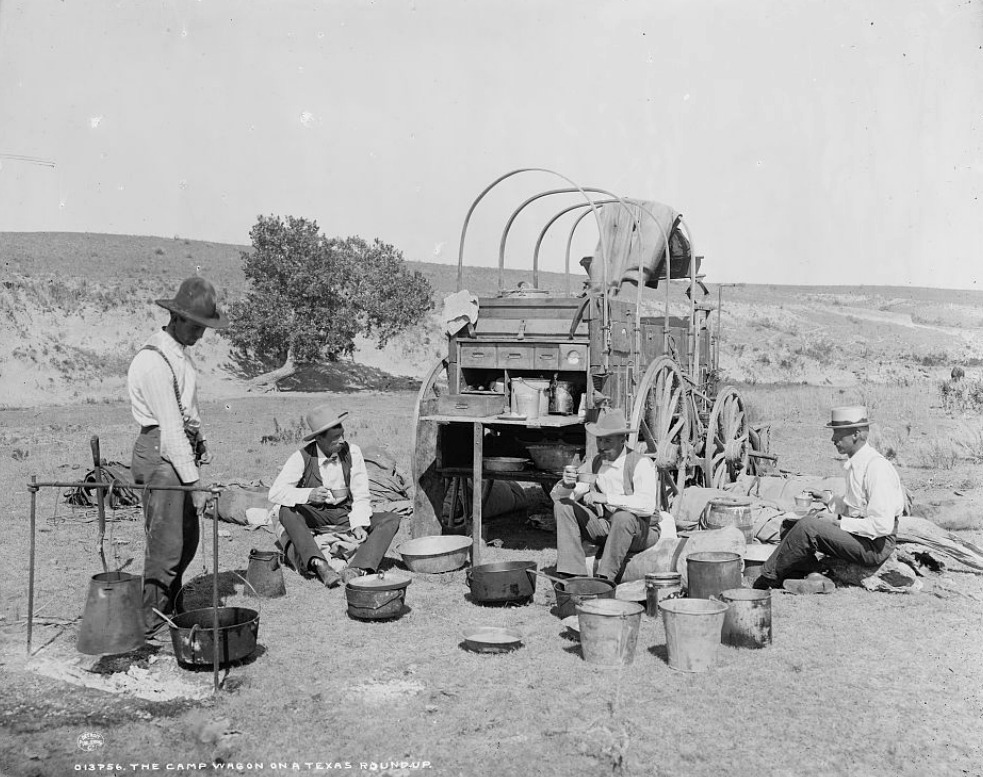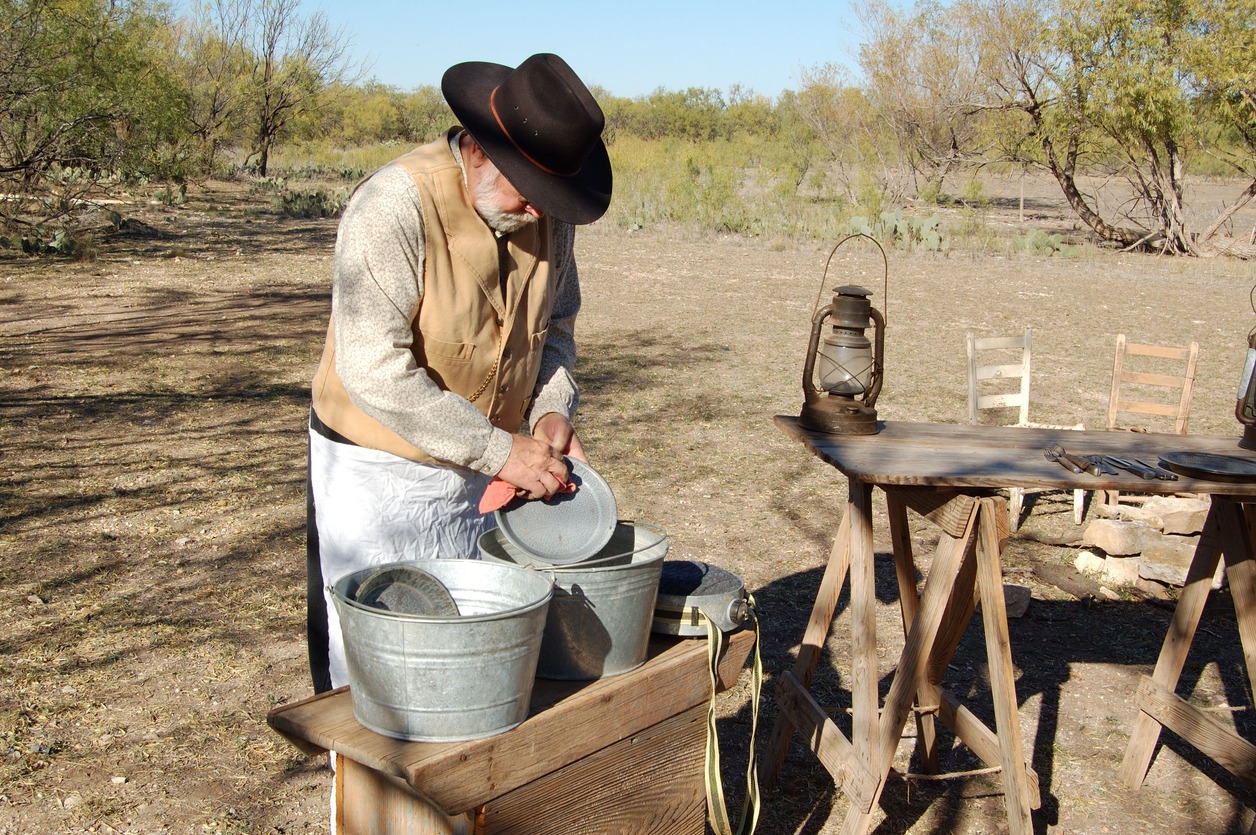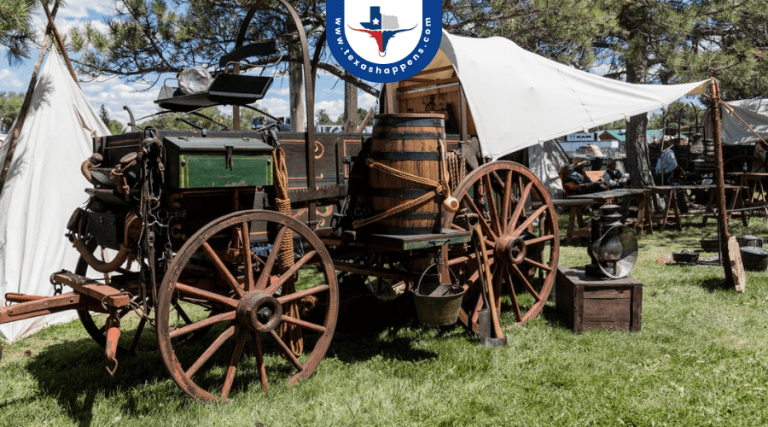A chuck wagon was the mobile kitchen that fed cowboys during cattle drives in the American West. Though often associated with Charles Goodnight, who popularized and standardized the design in 1866, the use of wagons for food predated him. Goodnight’s modifications—adding a chuck box, fold-down table, water barrel, and essential cooking gear—made his wagon especially effective.
The wagon’s cook (“Cookie”) ranked second only to the trail boss in authority and prepared meals in all conditions. Chuck wagons transformed cattle drives by solving the logistical challenge of feeding trail crews and became central to cowboy culture and identity. The story behind these rolling kitchens reveals much about frontier ingenuity.
The Origin and Evolution of the Chuck Wagon
The year 1866 marked a turning point in American frontier history when Texas rancher Charles Goodnight adapted a sturdy military-surplus wagon into a food-supply vehicle for cattle drives. His innovation solved a critical problem: how to consistently feed cowboys traveling hundreds of miles across the Western frontier.
The chuck wagon’s name comes from “chuck,” old English slang for food. Goodnight’s upgraded design included compartments for storing cooking tools and foodstuffs like coffee, beans, and flour. A fold-down tailgate provided a worktable for meal preparation.
Over time, these mobile kitchens became a fixture of the post-Civil War cattle drive era when Texas Longhorns were moved north to railheads in Kansas. Today’s food trucks trace their lineage to this Old West innovation that kept trail hands fed and on the move.
Anatomy of the Chuck Wagon: Essential Components

Built for rugged use, every chuck wagon featured elements tailored to support trail-life cooking. The most distinctive was the chuck box at the back of the wagon—a wooden cabinet with compartments for flour, sugar, utensils, and spices. When opened, its lid became a prep surface.
A water barrel, usually mounted to the wagon’s side, ensured a steady supply for cooking and drinking. Beneath the chuck box was the “boot,” a shallow drawer used to store cast-iron cookware like Dutch ovens and skillets.
Long-handled utensils allowed the cook to stir, flip, or ladle safely over an open fire. At the Parker House Ranching Museum, visitors can explore authentic examples of these tools and understand the craftsmanship involved in trail cookery.
The “Cookie”: Life and Responsibilities of a Chuck Wagon Cook

Second only to the trail boss in authority, the chuck wagon cook—known as “cookie”—served as the backbone of the cattle drive. Cookie rose as early as 3 a.m., often cooking breakfast before sunrise and continuing duties well past dinner cleanup.
The cook’s role extended beyond meal prep. Cookie was the unofficial medic, barber, counselor, and disciplinarian. Known as a “pot wrassler” or “bean master,” the cook enforced rules of conduct at the wagon—no cutting in line, no waste, and no eating until called.
Cowboys respected the cook deeply, not just for meals but for their central role in the social life of the trail crew. A good cook could make or break morale on months-long drives.
Chuck Wagon Cuisine: Signature Dishes of the Cattle Trails
Cattle trail cuisine was simple, hearty, and energy-packed. With limited ingredients, the chuck wagon cook improvised meals that were nutritious and filling.
- Beans & Bread: Dried beans were simmered for hours in Dutch ovens, while baking soda biscuits were cooked in cast-iron pots buried in hot coals.
- Savory Stews: One-pot meals, often flavored with salt pork, fed the entire crew with minimal cleanup.
- Cowboy Coffee: Strong, unfiltered coffee brewed all day in tin pots was a staple, poured into tin cups for cowboys on the go.
- Sweet Endings: Cobblers made with dried apples or peaches and sweetened with molasses or brown sugar offered rare but morale-boosting treats.
Chuck Wagon Etiquette and Daily Routine on the Trail
Life around the chuck wagon was governed by unwritten rules that ensured order and efficiency. Cowboys never touched food until Cookie gave the signal—often a shouted “Come and get it!” Respecting this call was part of trail discipline.
The cook’s day began before dawn, preparing breakfast while the others broke camp. After the morning meal, Cookie cleaned up, reloaded supplies, and moved the wagon ahead to the next stop—often arriving before the herd and setting up again for dinner.
Dust was the enemy of trail food, so riders were expected to dismount and walk their horses near the cook site. Strangers encountered along the trail were welcomed and fed, a tradition still honored today in chuck wagon cook-offs and heritage festivals.
The Cultural Impact of Chuck Wagons on Cowboy Life
Chuck wagons were more than kitchens—they were the social centers of the cattle drive. Charles Goodnight’s practical invention symbolized cooperation, self-reliance, and community on the frontier.
When the cook rang the bell, cowboys gathered to eat, swap stories, and relax after long days in the saddle. The chuck wagon became a haven, a counselor’s office, and a place where bonds were forged over beans and biscuits.
- Created gathering spaces for crew camaraderie
- Defined culinary traditions still associated with cowboy life
- Elevated the cook to a key leadership position
- Inspired modern competitions like chuck wagon races and cook-offs that keep the heritage alive
From the trails of the 19th century to today’s reenactments and state fairs, the legacy of the chuck wagon remains a celebrated symbol of Western resilience and ingenuity.


